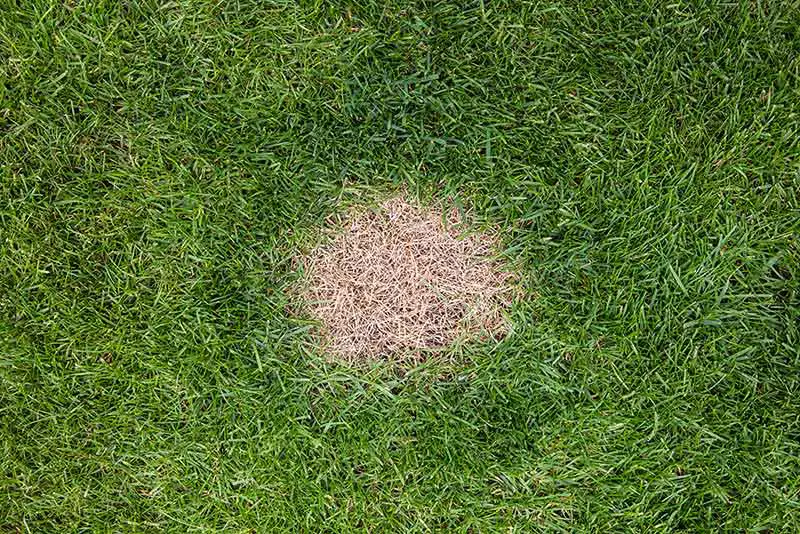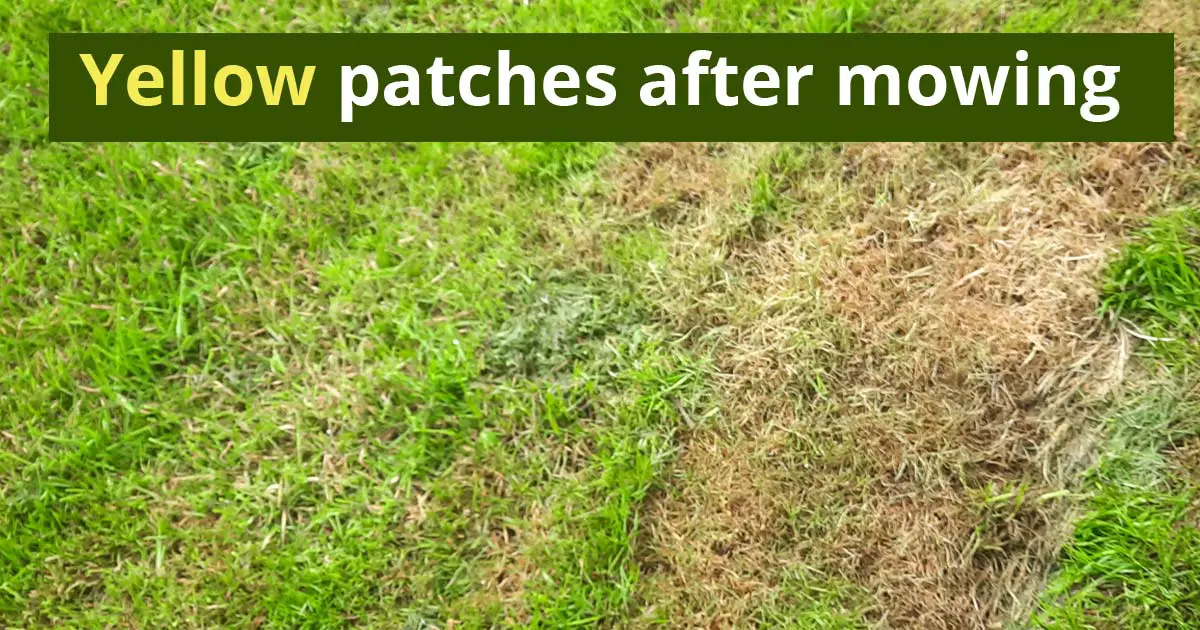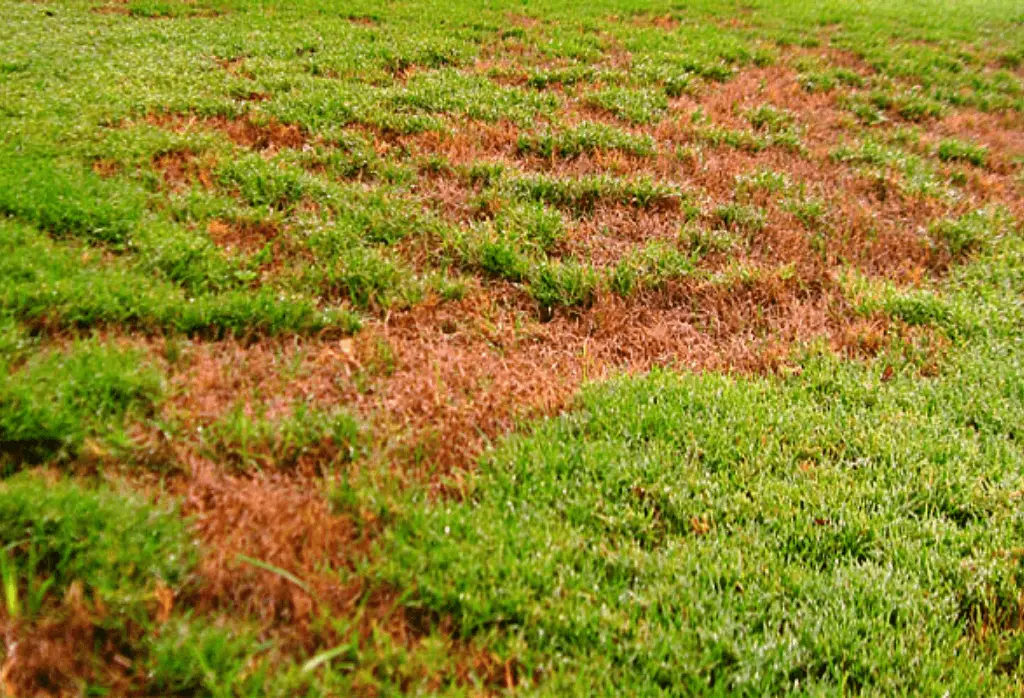Does Grass Paint Damage The Lawn
One thing I was worried about was the long-term health of the lawn. Would painting grass damage it and prevent it from coming back to its usual green self this fall?
According to the grass paint companies, no. Colorant does not damage the lawn. It is nontoxic and usually made with fertilizer, so it can actually help the lawn. And its only being applied to already dead grass blades, not the fresh green ones that will come up again when the rains return.
But some people do question how regular painting might affect the health of the lawn and soil after many applications. For my lawn, Im planning to use grass paint just once or twice per summer and leave the lawn naked the rest of the year to make sure it can work its photosynthesis magic.
Spread Compost On Your Lawn
Compost is absolutely amazing stuff, especially if you are using your own recycled and homemade compost.
Compost is one of the best natural fertilizers you can find anywhere and when you spread it on your lawn it will give your lawn a boost for many months unlike when you use chemical fertilizer and the boost only lasts for weeks if you are lucky.
Applying compost to your lawn is actually a simple job but you do have to make sure it is completely decomposed before you spread it otherwise it may be really difficult to thinly spread it over your lawn.
When you are spreading compost as a fresh layer of topsoil on your lawn it is important that you spread it in as thin a layer as possible preferably no deeper than a ½ inch.
If you spread compost on your lawn and it is more than a ½ inch deep you definitely run the risk of your grass getting covered up and if that happens due to lack of light it may start to turn yellow and wither.
When you successfully spread your compost in a thin layer evenly over your lawn the nutrients will get absorbed back into the soil which is why compost is the best and most natural fertilizer you can use in your lawn care routine.
Tip #: Know When To Fertilize
Lawns need to be properly fertilized to ensure a healthy green color and robust root growth. The best time to you feed your lawn depends on whether its a Warm Season grass species or a Cool Season grass.
Fertilize Warm Season grasses when they are actively growingin the spring through summer. Dont fertilize before they are actively growing in the spring or in late fall.
Cool season grasses should be fertilized in spring and fall, NOT in summer and winter. Fertilizing a lawn at the wrong time of year can actually weaken the turf and make it more susceptible to disease.
Many different types of lawn fertilizers are available, ranging from chemical-based to ultra-organic. Talk to your neighbors or to a lawncare professional about the best turf fertilizers in your area for greener grass.
You May Like: Control Wild Violets In Lawn
Poor General Lawn Care
While its often easy to blame things like lawn diseases and heat as the cause of yellowing grass, poor general lawn care could also lead to yellowing.
For instance, a neglected lawn or mowing too close can turn your grass yellow.
If you cut your grass too short , the grass ends up not having enough moisture, which leads to yellowing. You will often spot this since it will happen soon after you mow the lawn.
How To Get Dark

Many people dream of achieving that cool lush green lawn in vain. It is not yet too late to achieve a dark-green turf. Choose the right turf meadow, the one that will naturally grow to dark-green leaves with perfect density. We realize that it is still a problem for many people to achieve that beautiful, thick, and green lush. Well, first, you have to look into the type of fertilizer you are using. Proper irrigation and regular mowing are necessary consideration aspects of achieving the desired effects on your meadow.
There is no doubt that thick and healthy looks perfectly nice. Keep in mind that active growth in your lawn helps to get rid of the weeds as well as save money on herbicides. This is how you can achieve dark green pasture:
You May Like: Kill Ant Hill In Yard
Tip #: Overseed And Re
Sometimes existing lawns start looking tired and old. Pet urine can cause bare spots, and kids playing on the lawn can cause thin spots in the turf. A healthy lawn is comprised of thousands of individual grass plants, and over time some of those plants can wither and die.
Overseeding a tired lawn and reseeding bald spots and brown patches is a great way to revitalize a lawn. Just determine your lawns grass type and buy a similar type of seed to overseed and fill in the bare patches.
A little soil preparation will help grass seed sprout and take hold. In bare patches, use a metal rake to scratch the surface and create breaks in the soil/dead grass so the new seed can get just below the soil surface. Scatter the grass seed. Then cover the seed with a thin layer of topsoil and water the seed immediately. The best way to get new seed to sprout and thrive is to water the newly seeded areas twice a day until the new grass can become established. The result is green grass that will make you smile.
Avoid Creating Run Off
If water is starting to puddle or run off, its time to turn off or move the sprinkler to another spot. If it started to run off before you could give it a good soak, then turn the sprinkler off for 15-20 minutes to allow the water to soak in before turning it back on again. Hoselinks Oscillating Sprinkler can be beneficial in this scenario as the constant movement gives the soil a brief break in which to absorb the water before more is sprayed on. This type of sprinkler is also fully adjustable, allowing it to reach right across the lawn or concentrate on one small space. If in doubt, test it out! Its always better to trial watering methods to see what works best on your lawn.
Also Check: Rent Core Aerator Lowes
Urine Spots Should Be Reseeded
Dog urine stains do not disappear, particularly if you wait too long before applying a dog urine neutralizer. If you want to save the lawn from turning yellow and rotting after he pees on it. You should track your dog across the yard and add a neutralizer as soon as he pees. If the harm has already been done, you will get rid of the yellowing and fading patches in your lawn merely by reseeding or re-sodding it.
How To Make Your Lawn Green And Beautiful: The Best Tips
Its the ultimate goal for any homeowner: a perfectly green, lush lawn boosting curb appeal.
But figuring out how to make your lawn green isnt always as easy as it seems.
Weeds, thin grass blades, and dry, brown patches can quickly make your lawn look bad.
Keeping your lawn healthy and nourished can help you get that green lawn you want. Strong, healthy grass is better able to keep weeds at bay and withstand other treats.
Use these tips to help your lawn stay green and lush.
Recommended Reading: Lawn Aerator Lowes
Make Your Own Compost
If you are attempting to make your grass green naturally then you really do want to be making your own compost as compost is natures own fertilizer and is a whole lot more natural than any sort of chemical fertilizer will ever be.
Everyone should be making their own compost as it is one of the best ways to recycle your household waste and help save the planet.
Making your own compost is actually very simple once you have a compost bin in place. When you put items in your compost bin it will normally be fully decomposed in around 3 months and that is when you can use it for your garden.
Things you can put in your compost bin include:
- Grass clippings .
- Tree leaves that you rake up wont go to waste.
- Household food waste like vegetable and fruit scraps.
- Recycle your daily newspapers and turn them into compost.
- Any sort of manure .
- Any wood shavings or sawdust .
That is only a limited list of things you can put in your compost bin there is plenty more that can go in it. After 3 months it should all be decomposed in the compost bin and ready to be used in your yard for lots of different purposes.
Watering The Right Way
Don’t Miss: Best Herbicide To Kill Creeping Charlie
Water Your Lawn The Correct Way
Everyone knows that lawns love water but if you use the wrong technique for watering your lawn you may actually be making your lawn less healthy. When it comes to watering your lawn less is more, it is best that you water your lawn less often but when you do water your lawn you should give it a deep watering.
If you water your lawn a little bit every day it will encourage the roots of your grass to stay near the surface as thats where it is getting its water from.
When you water your lawn less often but give it deep water you will encourage the root system to grow deep as it searches for water and this will lead to a healthier lawn.
Healthy lawns have deep root systems and this means it is easier for your lawn to stay healthy during periods of drought as water near the surface will dry up a lot quicker than water that is deep in the soil.
You really have to be the judge when it comes to deciding when your lawn needs water as it depends on your local climate and type of grass but dont be someone who waters your lawn every day as it will become dependant on you feeding it surface water instead of growing a healthy deep root system.
Get Your Lawn In Training

To build a strong, healthy lawn it is important not to water it too frequently. Its all about training your lawn to develop a deep root system that will see it through the summer months without the need to switch on a sprinkler every day. To get the roots of your lawn searching for water at a deeper level, you’ll need to give it a long soak two to three times per week, rather than a short daily soak. This is not helpful as it will only help to create a shallow root system.
Don’t Miss: Love My Lawn
Early Stages Of Grub Chinch Bug Or Sod Webworm Damage
In the early stages of insect damage, your grass can first appear wilted, then yellow, and ultimately brown. There are different types of lawn pests that can damage your lawn. Chinch bugs suck, sod webworms chew, and grubs feed on the roots. But all 3 can damage your grass and cause a change in color.
PRO TIP: There are preventative treatments for insects that can help you avoid damage in the first place. Of course, there are also ways to address an active insect problem. The trouble with insect damage is that it can often mimic disease damage . Thats why its beneficial to have a professional diagnose your problem.
Lawns Need Air To Breathe
Lawns need oxygen as well as water, so its important to keep your lawn aerated. Aeration involves perforating the soil at intervals to alleviate compaction, allowing water, air and nutrients to penetrate deep below the surface. The easiest and cheapest method is to push a garden fork into the ground at 15cm intervals over the entire lawn, although for large areas it may be easier to hire a machine to do the hard work so you dont have to. An aerated lawn will also be better at absorbing water rather than letting it run off.
Recommended Reading: How Much Does Trugreen Lawn Care Cost
Control Lawn Weeds Insects & Diseases
All of the tips above help create the best lawn possible to ensure thicker, greener grass. This naturally reduces weeds, insects and diseases. However, these pesky lawn invaders are always lurking, waiting for the opportunity to infiltrate your lawn if it shows any signs of weakness.
Sometimes, certain conditions can lead to some weed breakthroughs or an excessively wet season can result in turf disease. Keeping an eye out for these challenges and managing them quickly can make simple problems disappear versus exacerbate into bigger, more visually unpleasing results.
A lawn care pro can offer solutions such as a combination of pre-emergent and post-emergent weed control tactics to keep all weeds at bay. Nothing blemishes thick, green grass faster than weeds, insects, and diseases.
Poor Lawn Maintenance In General
Although it is tempting to blame factors like lawn pests and humidity for yellowing turf, it is quite possible that inadequate lawn maintenance is to blame. A neglected lawn, for example, or mowing too close will make the grass yellow.
When you cut the grass too short , the grass loses moisture, which causes it to turn yellow. This is easy to spot if it occurs shortly after you mow the grass.
Also Check: Is Trugreen Lawn Care Safe For Pets
Stop Crabgrass In Its Tracks
Crabgrass germinates when the soil temperature reaches about 56 degrees F, which happens in mid-April in many regions. Wait until your soil reaches this mark for a few consecutive days, then apply a pre-emergent herbicide (or use corn gluten if you prefer a natural product, available at Bradfield Organics. Crabgrass doesn’t grow well in the shade, so you don’t need to add chemicals in well-shaded parts of your yard.
Tips For A Greener Lawn
Ashley van Raad
Read
Preparing your lawn for the summer sun and putting in a little extra work to keep it looking lush promises to reward you with grass that will make the neighbours green with envy!
Spring leading into summer can easily be the death of your lawn however, it is meant to be the absolute best time of year to enjoy it. Too often we see people watering their lawn in the midday sun and have a total facepalm moment. Said gardener loves their lawn enough to be out in the heat of the day tending to their grass but unknowingly they are doing the wrong thing. So, to lend a helping hand, here are 10 of the best tips to ensure your lawn remains green and lush throughout the warmer months.
Don’t Miss: Rabbit Repellent For Grass
Try A New Variety Of Grass
One way to achieve a healthy lawn is to know what type of turf you have. Most lawns are a mix of Perennial Rye, Kentucky Bluegrass and Fescue. Some turf becomes stressed when exposed to hot temperatures. If its healthy grass, it may be able to recover. But if its already experiencing stress from drought, mowing damage or insects and disease, it might not bounce back.
If you have an older lawn, it might be time to consider a more thorough renovation. Some older varieties of turf may not be able to handle the heat as well, while newer varieties are better equipped to cope with hot temperatures. It may be worthwhile to reseed your lawn with a new variety such as a Tall Fescue mix, which does well under the hot sun.
Mow Your Lawn To The Correct Height

Simply mowing your lawn in a simple and effective way to encourage your grass to turn green naturally.
If you dont follow the correct procedure and routine when you are mowing your lawn it can actually do more damage than good.
The idea is to mow your lawn and turn it green but get it wrong and you could turn your lawn yellow or brown and that would be a disaster.
Here is how I recommend you mow your lawn:
- The first spring mow I would recommend you set your lawnmower to the highest setting as this mow is all about signaling to your lawn its time to wake up and grow for the season.
- Every mow after the first you should gradually reduce the height until you get your grass to its desired length and I normally cut my lawn down to 1 inch during the summer months.
- Towards fall I start to mow my lawn to 1.5 inches and this length I feel encourages deep roots to grow which will encourage your lawn to grow green and healthy.
This is only a guideline for how to correctly mow your lawn but the general rule you should follow is that you should never cut more than of the length off your grass in one moving session.
Recommended Reading: Lowes Lawn Aerator